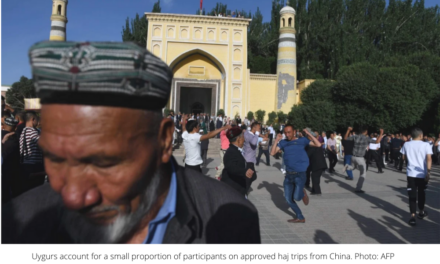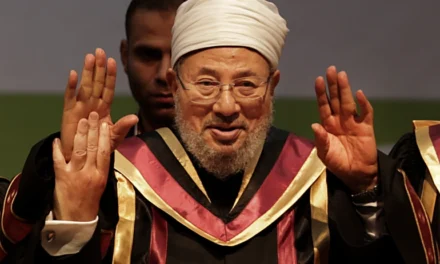
Originally Published By
Ted Hesson as “Trump officials pressing to slash refugee admissions to zero next year” for Politico
The Trump administration is considering a virtual shutdown of refugee admissions next year — cutting the number to nearly zero — according to three people familiar with the plan.
During a key meeting of security officials on refugee admissions last week, a U.S. Citizenship and Immigration Services representative who is closely aligned with White House immigration adviser Stephen Miller suggested setting a cap at zero, the people said. Homeland Security Department officials at the meeting later floated making the level anywhere from 3,000 to 10,000, according to one of the people.
The proposal for a near-shutdown of the refugee program is alarming officials at the Department of Defense, who don’t want to see a halt in admissions of Iraqis who risked their lives assisting U.S. forces in that country. The possible move comes after the Trump administration cut refugee admissions by a third this year, to 30,000.
If the administration shuts down refugee admissions, it would give President Donald Trump a powerful talking point as he makes immigration restrictions a centerpiece of his reelection campaign.
At the same time, it would strand thousands of people already far along in the process and damage the ability of resettlement agencies to process refugees in future years, according to advocates tracking the issue.
“In the long-term, it would mean that the capacity and the ability of the United States to resettle refugees would be completely decimated,” said Jen Smyers, a director with Church World Service, one of the nine U.S. resettlement agencies.
The State Department declined to discuss the possible cap. The departments of Homeland Security, Justice, Defense and the National Security Council, which had representatives at the meeting, did not respond to requests for comment.
The meeting of roughly 20 officials last week, which took place in the Eisenhower Executive Office Building, represents a preliminary step in the annual process of setting the admissions cap, according to those with knowledge of it.
USCIS official John Zadrozny and the State Department’s Andrew Veprek — both known as Miller allies — argued in the meeting that the refugee cap should be low because of ongoing security concerns and the ability of the U.S. to offer humanitarian protections through the asylum process, according to an attendee.
While the two programs similarly protect people facing persecution, refugees apply for protection from overseas, while asylum seekers apply once they’ve arrived at the border or entered the U.S. on a legal visa. Proponents of the refugee program contend it offers the U.S. diplomatic and military leverage internationally beyond its humanitarian aims.
But even as Trump officials weigh dramatically cutting refugee admissions, the administration also has sought to greatly reduce the availability of asylum. A sweeping regulation issued this week would block migrants who pass through another country en route to the U.S. from seeking asylum. The measure — already the subject of two lawsuits — could choke off the majority of asylum claims.
The Miller allies asserted at the meeting that the refugee determination didn’t matter because it was a ceiling, not a floor, and the administration still retained the discretion to admit fewer people, according to one of the people with knowledge of it.
The various agencies will submit their recommendations by Aug. 1, the person told POLITICO.
The presence of Zadrozny and Veprek in the refugee cap negotiations speaks to the influence of Miller over the Trump administration’s immigration agenda. Both are viewed as proxies for the president’s hard-line adviser.
Zadrozny worked for the White House Domestic Policy Council before moving to the State Department last year. He joined USCIS after Trump tapped former Virginia attorney general and immigration hawk Ken Cuccinelli to become acting director.
Veprek is a foreign service officer who moved last year to a high-level role State Department’s Bureau of Population, Refugees and Migration.
Even as some within the administration have sought to shut down the refugee program, the Defense Department has emerged as an advocate. Former Defense Secretary Jim Mattis pushed behind the scenes last year for the administration to keep the refugee ceiling at 45,000, according to a previously undisclosed letter obtained by POLITICO.
“Over the last 17 years of war, numerous Iraqi nationals have risked their own lives and their families’ lives by aligning with our diplomats and warfighters providing essential mission support. We owe them support for their commitment,” he wrote in a missive to White House national security adviser John Bolton.
Mattis added that abdicating the commitment to Iraqis who worked with U.S. military — many as translators and interpreters — could threaten U.S. interests.
Trump, following the State Department’s recommendation, ultimately opted to drop refugee levels to 30,000, down from 45,000 the year before, but not to the very low levels that some refugee backers feared.
Whether acting Defense Secretary Mark Esper will defend the program remains unclear.
Nearly 9,000 refugees are currently approved to travel to the U.S., according to a recent State Department report reviewed by POLITICO. In addition, more than 29,000 refugees have completed USCIS interviews, a major step in the process.
Among the Iraqi applicants that remain a concern for the Defense Department, only 140 have entered so far this year. More than 100,000 remain in the queue, according to an analysis provide by refugee groups.
Refugee backers argue the number of people currently along in the process undercuts the argument that the U.S. can’t handle 30,000 or more refugees next year. In addition, they worry that the doomsday scenario — taking numbers down to zero — could debilitate the resettlement program for years to come.
The refugee admissions process typically takes years and officials in the past have developed multiyear strategies that would be disrupted by a wholesale stoppage, according to Barbara Strack, a former head of the USCIS refugee affairs division who retired in 2018.
“Half or more of the applicants who were admitted in a given fiscal year would have had their USCIS interview in the preceding year,” she said of planning during her tenure. “We were really building a pipeline for [who] was going to be admitted in the following fiscal year.”
Refugees have not historically posed a significant terror or national security threat, according to an analysis earlier this year by the libertarian Cato Institute.
Furthermore, the Trump administration could always choose to accept refugees from different parts of the world.
“Even if you’re really hesitant about certain types of conflict-torn areas, I still think there are other areas that are not of concern,” said David Inserra, a policy analyst with the conservative Heritage Foundation. “There are enough refugees out there in the world that I think you could find more folks that you’re not particularly worried about.”
The Trump administration doesn’t need to make the refugee determination until next month and there remains time for outside groups to lobby the administration. The administration also must consult with members of related congressional committees regarding the determination, although that requirement has been mostly brushed aside under Trump.
Regardless, refugee supporters worry about the direction of the talks.
“We don’t get the final number until September, and things can change,” said one pro-refugee advocate following the issue. “But the conversation being where it is now is alarming.”













